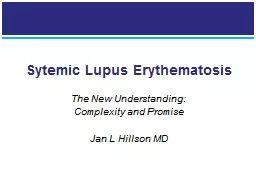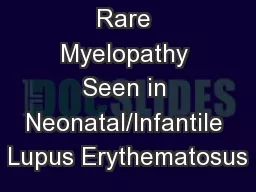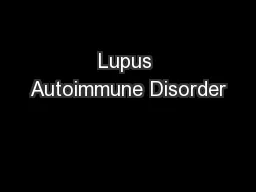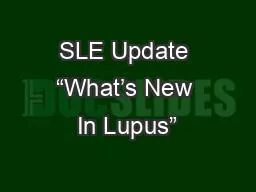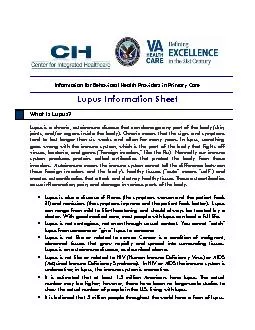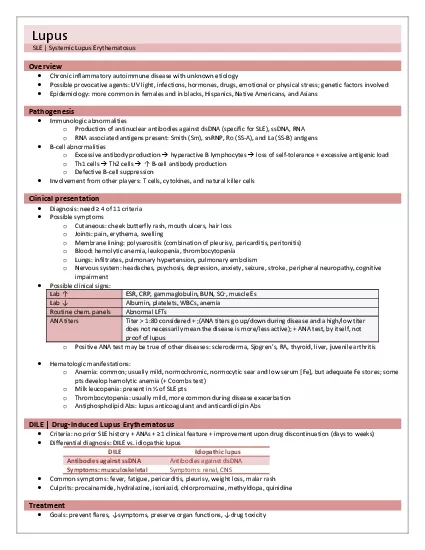PPT-Sytemic Lupus Erythematosis
Author : cheryl-pisano | Published Date : 2016-11-30
The New Understanding Complexity and Promise Jan L Hillson MD Gold standard is agreement among specialists To create the ACR criteria Several specialists made lists
Presentation Embed Code
Download Presentation
Download Presentation The PPT/PDF document "Sytemic Lupus Erythematosis" is the property of its rightful owner. Permission is granted to download and print the materials on this website for personal, non-commercial use only, and to display it on your personal computer provided you do not modify the materials and that you retain all copyright notices contained in the materials. By downloading content from our website, you accept the terms of this agreement.
Sytemic Lupus Erythematosis: Transcript
Download Rules Of Document
"Sytemic Lupus Erythematosis"The content belongs to its owner. You may download and print it for personal use, without modification, and keep all copyright notices. By downloading, you agree to these terms.
Related Documents

